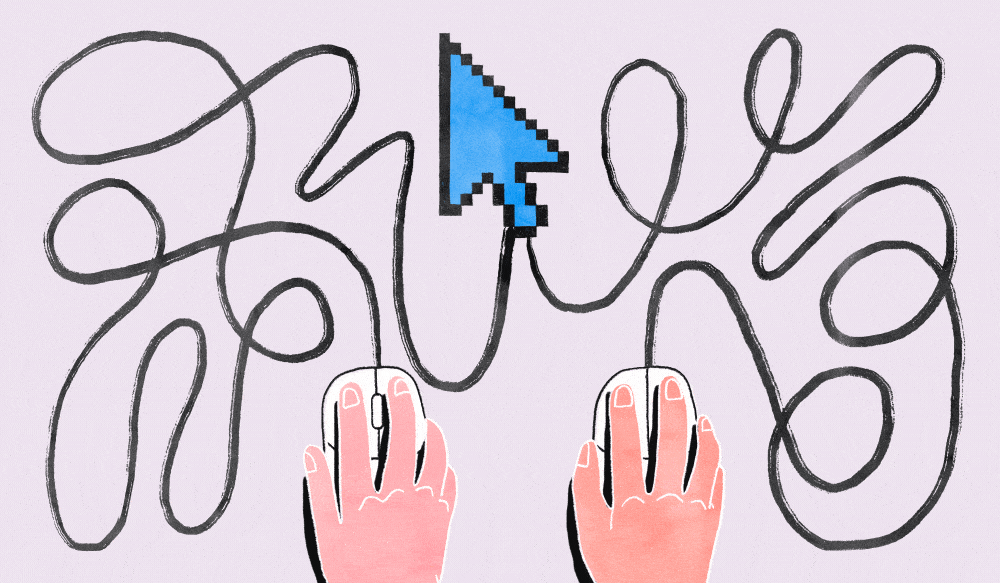WTF is keystroke tech? (and how it’s used to spy on workers)

An increasingly uncomfortable topic is emerging around how employers keep track (literally) of just how much – or how little – people are working. This digital surveillance has been on the uptick since remote work became mainstream during the pandemic and companies became concerned that they couldn’t physically see staff at desks. Many claimed productivity had suffered as a result.
The debate around what tools a company uses to track their employees’ productivity, flared up last week when a woman in Australia was fired after her company’s surveillance tools found she hadn’t spent enough working hours typing.
The insurance company employee of 18 years allegedly had zero keystroke activity for upwards of 100 working hours in October and again in November, reported Business Insider. The woman, Suzie Cheikho, has publicly refuted the allegations.
But experts believe employers using this kind of tech set a worrying precedent. Here’s an explainer:
How does it work?
Keystroke technology is a software that tracks and collects data on employees’ computer use. It tracks each and every keystroke an employee types on their computer and is one of a few tools companies have to more closely monitor exactly how staff spend the hours they are expected to work.
Newer features allow administrators to also take occasional screenshots of employees’ screens.
One firm providing the tools is Interguard, which uses software allows administrators to view logs of employee computer use data, including desktop screenshots of employee activity. It also alerts administrators when certain employees’ computer activity diverts from their normal patterns.
Sounds creepy, but why does it matter if people are working?
For starters, data can often be wrong and digital tools can have glitches. And of course, it points to a distrusting, negative work culture.
“I think it’s a tactical, bad idea that immature managers might use and probably they’re sorry they did it,” said Josh Bersin, an analyst and CEO of The Josh Bersin Company, a research and advisory firm focused on corporate learning, talent management and HR.
Experts call it an invasive tactic which doesn’t consider outputs or the quality of work done. “It means there’s a complete lack of trust between the employee and the employer, said Darrell West, senior fellow at the center for technology innovation at the Brookings Institute.
Employers are grappling with new ways of measuring productivity in a post-pandemic working world and as they find themselves having to better justify RTO mandates.
About 37% of 2,000 U.K.-based desk workers said their productivity is still measured on visibility, or the time they spend either physically in the office or active online, new research from Slack found.
What really matters is what companies do with the information they collect on surveillance platforms, Bersin said. “It’s more of an issue of what are you doing with it and why are you looking at it, and if you’re using it for evaluation purposes, that’s just not the way people work,” Bersin said. “They should be evaluated on their output and their contribution, not on their activity [at a computer],” he said.
Some employees who know they’re being monitored have even found ways around it. They’ve turned to mouse jigglers and other hacks to trick systems into recording them as active when they really aren’t.
Would I know if I’m being surveilled at work?
In general, employers typically have access to employees’ email accounts and can view data like their calendars, when and how many emails they’re sending, and other information, which staff may already be aware of, Josh Bersin said.
But companies using actual keystroke technology or other software on a company machine or network are under no obligation to make that known to staff, West said.
“It would be one thing if people knew companies were monitoring their keystrokes, and then they could act accordingly. But in a lot of cases, employees don’t even know their companies are doing so,” West said.
You might find out you’re being surveilled if your company’s software flags your activity, however.
There are proper precautions for companies to take when this happens, according to Awareness Technologies, which owns both Interguard and Veriato — two firms providing these tools.
“Any company monitoring keystroke activity must act responsibly with the resulting information,” the company said in an email statement.
“Monitoring software often uncovers anomalies in work behavior patterns, which may indicate a lack of productivity, but a conversation should always take place before a company takes further action,” it said.
Upon receiving data that an employee isn’t actively working when expected, HR managers should schedule a meeting and investigate further before taking action, the company said.

